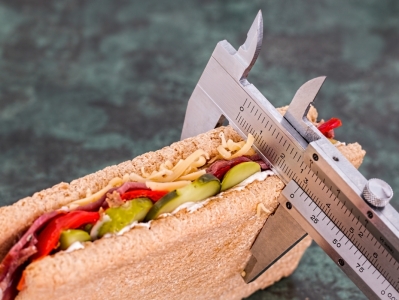Get Fit and Feel Good with Macros 101
November 5, 2018

If you’re new to the health and fitness scene, you’ve probably heard people talk or write about ‘macros.’ What exactly are macros, and how can they help you with your diet and weight loss plans? We’ll cover everything you need to know in our macros 101 guide below.
What are macros?
When it comes to losing weight and feeling good, it can be confusing to know how your diet, lifestyle, and exercise regime are supposed to align for the maximum result. Macros and the idea behind macro tracking are designed to help bring clarity to your diet and fitness plans.
‘Macros’ stands for macronutrients. Macronutrients are the three different types of calories you can consume. Basically, every food you eat will fall into one of the three macro categories. Knowing what type of macros you’re consuming will help you design a diet and fitness plan that’s going to work for you on a highly tailored, customized level. Every person has different diet and fitness goals they want to reach and knowing your macros can help you achieve them.
What are the three types of macros?
● Protein
● Fat
● Carbohydrates
When you hear the term ‘calories,’ it’s a general term. Any food or beverage has an energy or calorie count assigned to it. But macronutrient breaks calories down into specific types of calories. The body will burn and store these different types of macro calories in different ways. Carbs, fats, and proteins play specific roles when it comes to meeting or even exceeding the body’s energy needs. If you’re athletic, knowing your macros is crucial for building muscle, maintaining energy, and staying in shape.
What are the calorie counts of each specific macronutrient? 1g of protein = 4 calories
1g of carbs = 4 calories 1g of fat = 9 calories
What is flexible dieting?
Flexible dieting is also known as macro tracking. When you track macros, you are counting every gram of protein, carb, and fat that you eat every day. But counting and measuring macro calories can be a time consuming and tedious process. Why on earth would someone do this to themselves? Because for athletes especially, it works.
You can definitely lose weight by maintaining a consistent calorie deficit. But, you can’t control where those excess pounds are dropping from, i.e., either fat or muscle stores. If you’re an athlete or otherwise want to build and maintain muscle mass, you need to track macros, so you’re sure that excess weight is pulled from fat stores, not muscle stores. Unfortunately, when you try to lose weight by restricting your overall calorie intake, you lose muscle along with fat. That’s not good if your goal is to get and stay in good shape.
Macro tracking has been used for many years in the bodybuilding and weightlifting industry because it's so effective at maintaining and protecting muscle mass. Macro monitoring gives you the ability to control your body composition.
How can you know if macro tracking is right for you?
- ● If you’re an experienced exerciser. Those who’ve been using CrossFit, weight training, or other high-intensity fitness plans can benefit from macro tracking, especially if you’ve reached a plateau.
- ● If you’re unsure of how much protein you need to be consuming. Macro tracking is beneficial if your fitness goals require high-intensity workouts. It’s crucial that you get the correct amount of protein for your body.
- ● People who hate the idea of elimination nutrition programs and other restrictive diets can benefit from macro tracking.
- ● If you have a competition coming up. Macro tracking can help you drop body weight while improving and maintaining lean muscle mass.
People who are new to fitness and dieting, or have a history of eating disorders should not attempt macro tracking.
But if you think macro tracking is right for you, how can you get started?
For protein, you need 1g of protein for every pound of body weight. So, a woman who weighs 145 lbs will need 145 grams of protein every day. Aim for 20 to 30 grams of protein for each meal, plus a post-workout snack or shake to reach your protein macros for the day.
For fat macros, keep your intake around .5g for each pound of body weight to start. When it comes to fat macros, get them from the best quality foods you can, like nuts, grass-fed butter, and avocados.
When it comes to carb macros, you need carbs for energy if you do high-intensity workouts. People who are sedentary can eliminate carbs and lose weight, but athletes can destroy their energy levels and muscle mass by cutting out carbs. Aim to get 30% of your daily calorie intake from carbs. Of course, the amount you train can influence and change this number, but 30% is a good starting point.
When tracking macros, you’ll need to do what is called refeed days. When you run at a caloric deficit and train, your body will adapt and stop burning fat. A refeed day, one per week is when you eat above your normal macro count. It tricks your body into entering a fat burning mode.
What tools do you need to get started?
When it comes to macros 101, using apps to help you track your calories can be super helpful. When you’re ready to take your diet and fitness regime to the next level, make sure you’re tracking your macros so you can protect your muscles while still losing weight and feeling good.